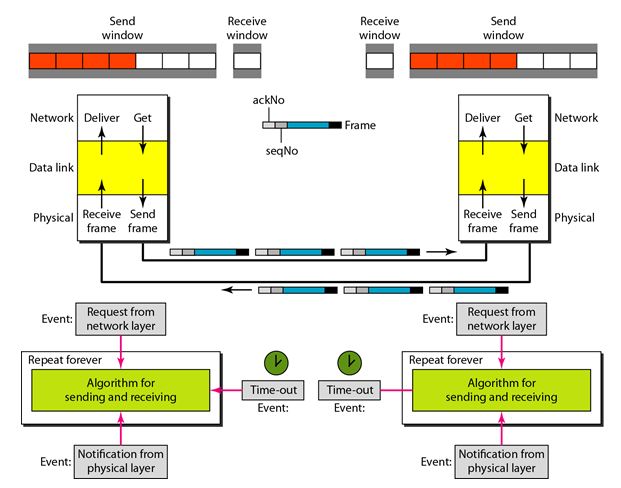Piggybacking Protocol
In some protocols data frames flow in only one direction although control information such as ACK and NAK frames can travel in the other direction. In real life, data frames are normally flowing in both directions, from node A to node B and from node B to node A. This means that the control information also needs to flow in both directions.
A technique called piggybacking is used to improve the efficiency of the bidirectional protocols.
When a frame is carrying data from A to B, it can also carry control information about arrived (or lost) frames from B; when a frame is carrying data from B to A, it can also carry control information about the arrived (or lost) frames from A.
You May Also Like:
Framing and Framing Protocols
Simplest Protocol
Stop-and- Wait Protocol
Stop and Wait With ARQ Protocol
Go-Back-N ARQ Protocol
The design for a Go-Back-N ARQ using piggybacking is in the following figure.
Note that each node now has two windows: one send window and one receive window. Both also need to use a timer. Both are involved in three types of events: request, arrival, and time-out. However, the arrival event here is complicated; when a frame arrives, the site needs to handle control information as well as the frame itself. Both of these concerns must be taken care of in one event, the arrival event. The request event uses only the send window at each site; the arrival event needs to use both windows.
An important point about piggybacking is that both sites must use the same algorithm. This algorithm is complicated because it needs to combine two arrival events into one.
You May Also Like:
Selective Repeat ARQ Protocol
HDLC Configurations,Transfer Modes and Different Types of Frames
Control Fields of HDLC Frames
Back to DCN Questions and Answers


